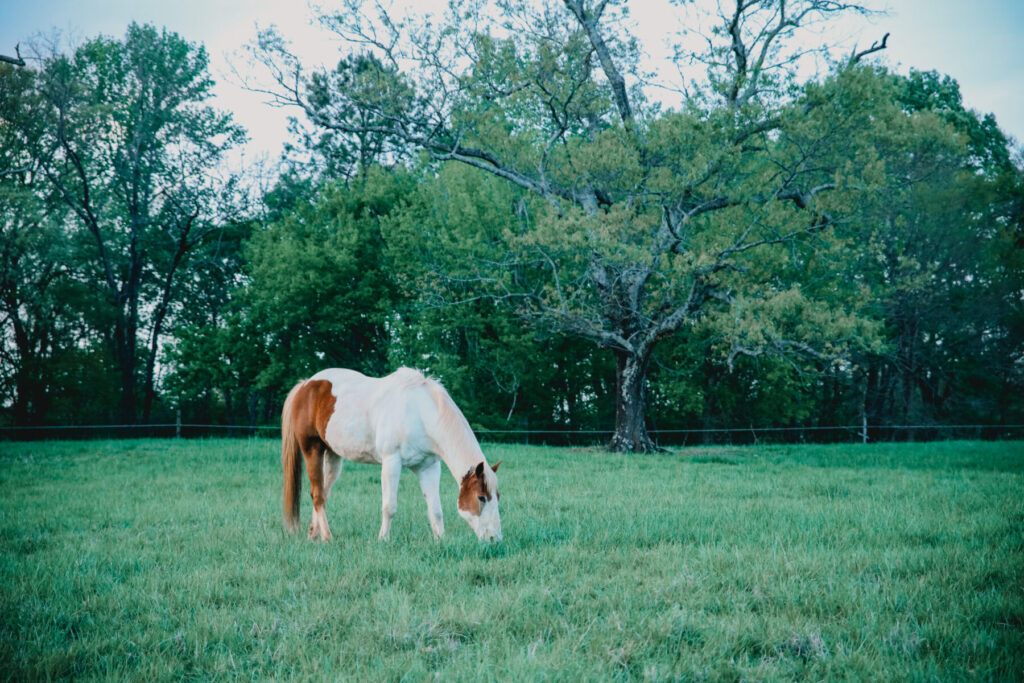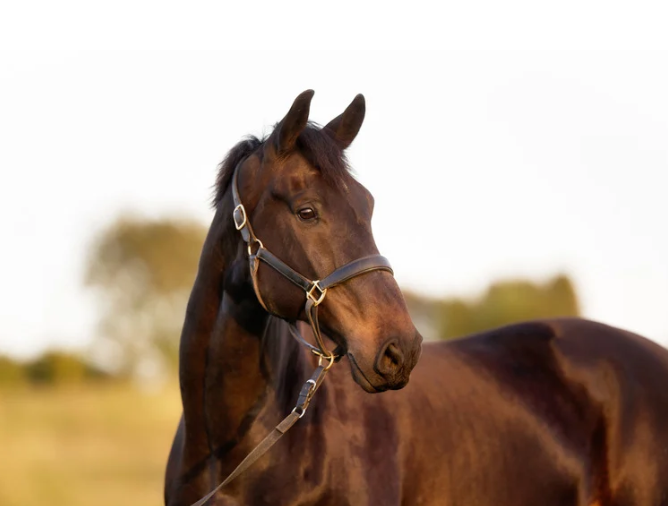
PUBLICATIONS
The Equine Faculty and Staff at the University of Georgia are dedicated to serving horse owners, students, and equine enthusiasts by providing the most current, research-based information on equine management. Through innovative teaching, hands-on outreach, and ongoing scientific research, our team remains at the forefront of advancing equine health, welfare, and industry practices across Georgia and beyond.
Equine Extension Publications

Basic Nutritional Guidelines for Equine Management
(B 1356)
The purpose of this publication is to serve as an educational reference and resource to those who are interested in animal feeding and nutrition. Our primary objective is to list the common terms used when discussing animal feeding. This listing will also be helpful when reading articles on animal feeding and nutrition, feed analysis reports or tags associated with feeds sold in the market.

Bits 101
(B 1379)
In order to select the right bit, it is important to first understand the principles of how a bit functions and the pressure points on the horse that are affected by different bit types and designs. The two basic types of bits are snaffle bits and leverage (curb) bits. These differ in the areas on the horse where each applies pressure. In addition to these two types of bits, there are hackamores, which generally do not have a mouthpiece. Hackamores may either be true hackamores (bosal or sidepulls), which are direct pull devices, or mechanical hackamores, which employ leverage. There are also many pieces of headgear that combine a mouthpiece with a mechanical hackamore as well as several options that combine a snaffle bit with a piece over the nose that does not incorporate leverage.

Caring for the Older Horse: Common Problems and Solutions
(B 1368)
Horses have relatively long life spans compared to other livestock and companion animals, often living into their late 20s and early 30s. Many horses have productive careers into their 20s. In fact, in many disciplines, horses do not peak until their teenage years. Good nutrition, maintenance and veterinary care allow horses to lead longer and more productive lives. However, as horses age, their needs change and additional care may be required to keep them as healthy as possible. This publication addresses changes in the aging horse’s body that impact its requirements, possible ways to meet these requirements, and solutions to problems that may occur.

Equine Parasite Control: Moving Beyond Rotational Deworming
(Circular 1193)
In the equine industry, parasite control is primarily accomplished using anthelmintics (dewormers). Still commonly used, the previous recommendation for treating parasites was a rotating program of dewormers on an approximate 8-week schedule.
Many horse owners implement this outdated recommendation today without realizing that newer recommendations have been released by the American Association of Equine Practitioners (AAEP) due to increasing incidence of parasite resistance to dewormers (AAEP Parasite Control Subcommittee, 2019).

Evaluating Horse Conformation
(B 1400)
When examining horses for conformation, either when considering a purchase or competing in horse judging contests, it is important to break things down into key principles to avoid becoming overwhelmed when putting the overall picture together. There are five main criteria to evaluate when examining a horse’s conformation: balance, structural correctness, way of going, muscling, and breed/sex character (also known as type). This publication describes each of these criteria in detail.

Evaluating Common Equine Performance Classes
(B 1401)
When competing in youth horse judging contests or events at horse shows, it is important to have a good understanding of basic performance events that may be encountered. This publication is designed to give a basic overview of common performance classes. It is by no means comprehensive of all events that may be seen and does not go in-depth on any one event. For more specific information on the rules of each event, it is important to review the rulebooks/handbooks of the governing equine organizations, such as the American Quarter Horse Association, the United States Equestrian Federation, the United States Hunter Jumper Association and the National Reining Horse Association. Most organizations have websites with links to their rulebook or handbook.

How to Feed a Horse: Understanding the Basic Principles of Horse Nutrition
(B 1355)
With so many feed, supplement and hay choices available, many people find themselves wondering exactly what their horse needs for good health and nutrition. Many horse-feeding opinions and myths make deciding what to feed even more difficult. This publication explains your horse’s nutritional needs, common guidelines to observe when feeding your horse and how to determine if your horse’s nutritional requirements are being met.
Equine Research Publications
Read more about the research projects being conducted through our program from their published findings:
Long, J.F., Duberstein, J., Costin, K., Callaway, T., Abrams, A., Wassel, B., Toal, K., and Duberstein, K. 2024. Environmental impacts and daily voluntary movement of horses housed in pasture tracks as compared to conventional pasture housing. Journal of Equine Veterinary Science. Volume 143.
Hart, R., Bailey, A., Farmer, J., and Duberstein, K. 2024. Chewing analysis of horses consuming bermudagrass hays in different styles of slow feeders as compared to loose hay. Journal of Equine Veterinary Science. Volume 140.
Blackwell, M., Britt, A., Fagan, M., Turner, K., and Duberstein, K. 2021. Short term effect of sericea lespedeza on strongyle fecal egg counts in mature horses. Journal of Undergraduate Research. Volume IX.
Fagan, M., Harris, P., Adams, A., Pazdro, R., Krotky, A., Call, J., and Duberstein, K. 2020. Form of vitamin E supplementation affects oxidative and inflammatory response in exercising horses. Journal of Equine Veterinary Science. Volume 91.
Duberstein, K., Pazdro, R., Lee, K., Abrams, A., Kane, E., and Stuart, R. 2017. Effect of supplemental vitamin E form on serum alpha-tocopherol levels and blood oxidative stress parameters in response to a novel exercise challenge. Journal of Equine Veterinary Science. Volume 57; pgs. 61-66.
Duberstein, K.J., Johnson, E.L., and A. Whitehead. 2013. Effect of shortening breakover at the toe on gait kinematics at the walk and trot. Journal of Equine Veterinary Science. Volume 33(11); pgs. 930-36.
Huguet, E.E. and K.J. Duberstein. 2012. Effect of steel and aluminum shoes on forelimb kinematics in stock type horses as measured at the trot. Journal of Equine Veterinary Science. Volume 32(5), pgs 262-267.
Duberstein, K.J. and J.A. Gilkeson. 2010. Determination of sex differences in personality and trainability of yearling horses utilizing a handler questionnaire. Applied Animal Behaviour Science. Volume 128(1-4), pgs 57-63.
Duberstein, K.J., S.E. Johnson, L.R. McDowell and E.A. Ott. February 2009. Effects of vitamin E supplementation and training on oxidative stress parameters measured in exercising horses. Comparative Exercise Physiology. Volume 6(1), pp. 17-25.
Duberstein, K.J., S.E. Johnson, L.R. McDowell and E.A. Ott. February 2009. Protein carbonyl assay to measure oxidative stress in muscle of exercising horses supplemented with vitamin E. Comparative Exercise Physiology. Volume 6(1), pp. 1-5.
R.A. Fayrer-Hosken, N.S. Hill, G.L. Heusner, W. Traylor-Wiggins, and K. Turner. 2013. The effects of ergot alkaloids on the breeding stallion reproductive system. Equine Vet. J. (in press)
